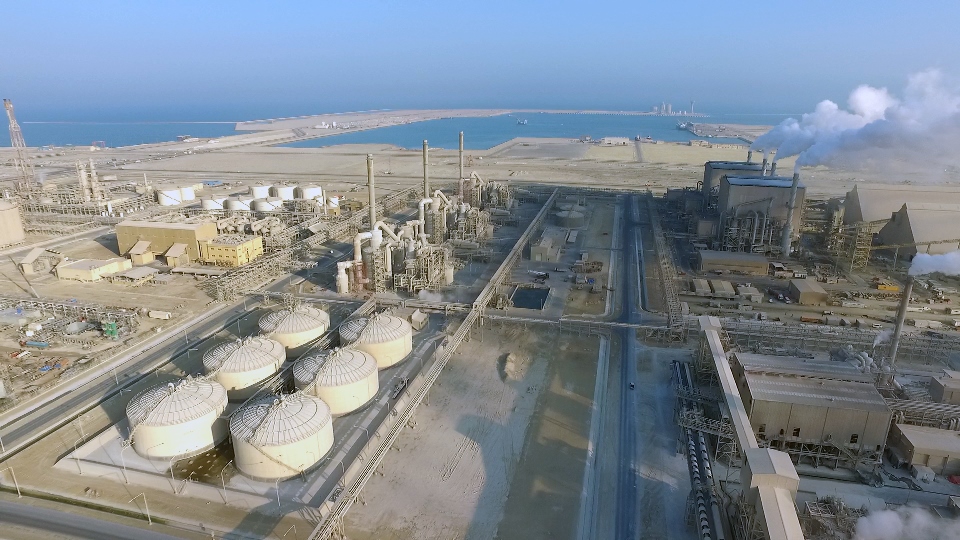
Industrial city in Ras Al-Khair points to the Kingdom’s economic future
IN the desert, far from the skyscrapers and busy streets of its big cities, Saudi Arabia is looking to build its future on two other natural resources.
Phosphate minerals, used to produce fertilizer, and bauxite, the chief ore in making aluminum, are at the core of an effort to make mining a pillar of a diversified Saudi economy.
About 80 kilometers north of Jubail on the Gulf coast, the Ras Al-Khair Industrial City has risen from the barren sands of the desert over the last eight years.
After an investment of nearly $35 billion (SR131 billion), the project will be officially inaugurated by Custodian of the Two Holy Mosques King Salman next week — a symbol of how the world’s largest oil exporter seeks to lessen its reliance on petroleum.
“This place we are in did not exist in 2007,” Khalid Al-Mudaifer, CEO of Saudi mining company Maaden, said during a government-organized visit by foreign journalists to the site.
“There was nobody at all, other than a good number of camels.”
Saudi Arabia — the world’s largest oil exporter — has seen its revenues hit hard by the fall in global oil prices by more than half since 2014.
In April the Kingdom announced a wide-ranging reform plan, Vision 2030, that seeks to diversify the economy by promoting a wider variety of private industries and businesses employing more Saudis.
With reserves including phosphate, bauxite, copper and uranium, Saudi Arabia is rich in minerals but the Vision plan noted that the mining sector “has yet to meet expectations”.
The government sees mining as the eventual third pillar of its economy after petroleum and petrochemicals.
It wants the sector to contribute SR97 billion ($26 billion) to the Gross Domestic Product by 2020, roughly double the current proportion.
The scale of Vision 2030 has raised doubts over whether it can all be achieved but officials say Ras Al-Khair is helping diversification.
“This project is the first project to use phosphate in Saudi Arabia. The phosphate has been there for 35 million years but it required infrastructure, and now the infrastructure is there,” Mudaifer said.
Maaden Phosphate, a venture with Saudi petrochemicals giant SABIC, is one component of the integrated Ras Al-Khair development.
Phosphate rock mined west of Arar city in the far north near Iraq is transported by rail 1,450 kilometers across the desert to Ras Al-Khair, where it is turned into fertilizer.
The product is loaded onto ships for export to farmers in India and other countries from the project’s own port, accounting for 10 percent of global phosphate fertilizer output.
Trains also transport another major raw material, pinkish bauxite rock mined in central Saudi Arabia, to the industrial city.
Maaden Aluminum, a joint venture with US giant Alcoa, operates a Ras Al-Khair refinery that converts the bauxite into alumina.
The fine, white powder in turn goes into a four-year-old smelter that produces shiny ingots and other aluminum products.
At the site’s rolling mill, a further step sees mattress-sized slabs of aluminum gradually heated down, in a spray of foam and a flash of light, until they become thin sheets.
Customers buy the sheets to make drink cans or construction material. In a new venture, Maaden also has a contract to supply sheets to Britain’s Jaguar Land Rover.
Mudaifer said Ras Al-Khair is “taking a good share” of the regional aluminum market but remains small in terms of global output, with around 750,000 tons a year.
For the milled products, China and other producers provide strong competition, he said, but market share will increase “because there is a good growth in demand”.
Stretching over 90 square kilometers (35 square miles), the Ras Al-Khair site is vast, its factories standing alongside housing and other facilities for roughly 12,000 workers.
The site even has its own water desalination and power plant, whose 22 red-and-white conical towers contrast with the grayness of the factory buildings, tanks and pipes, some of them caked in bauxite dust.


























